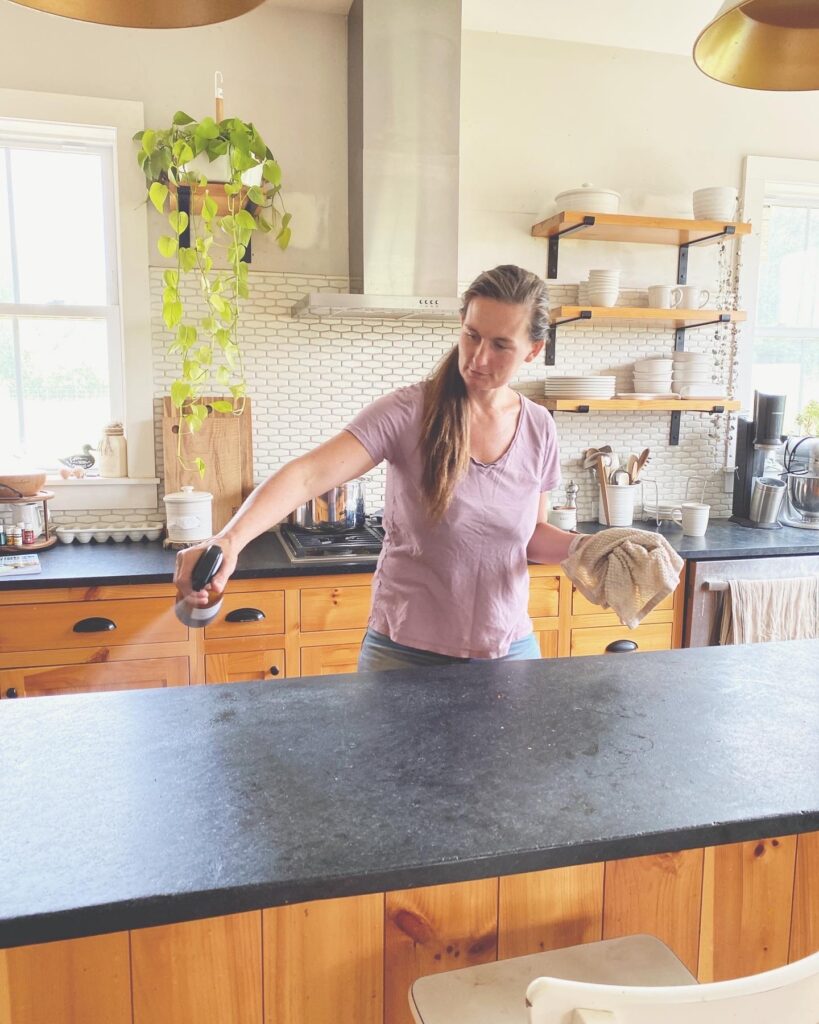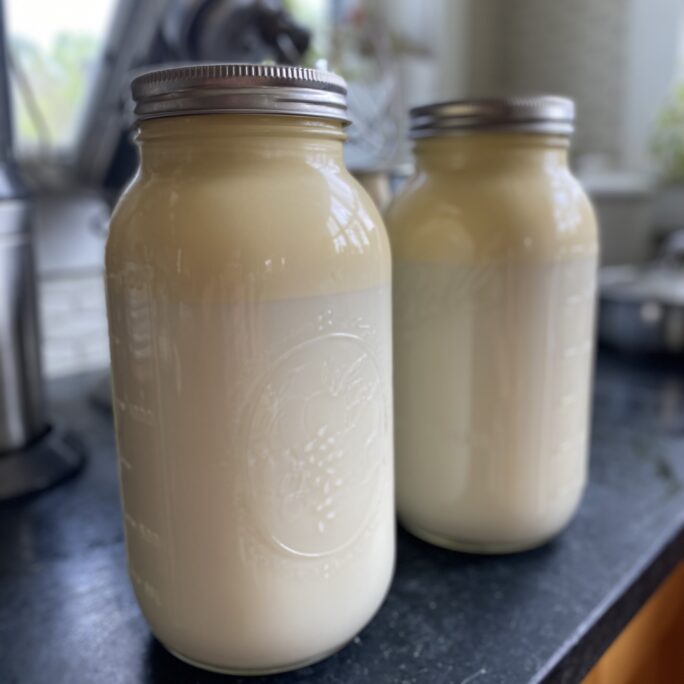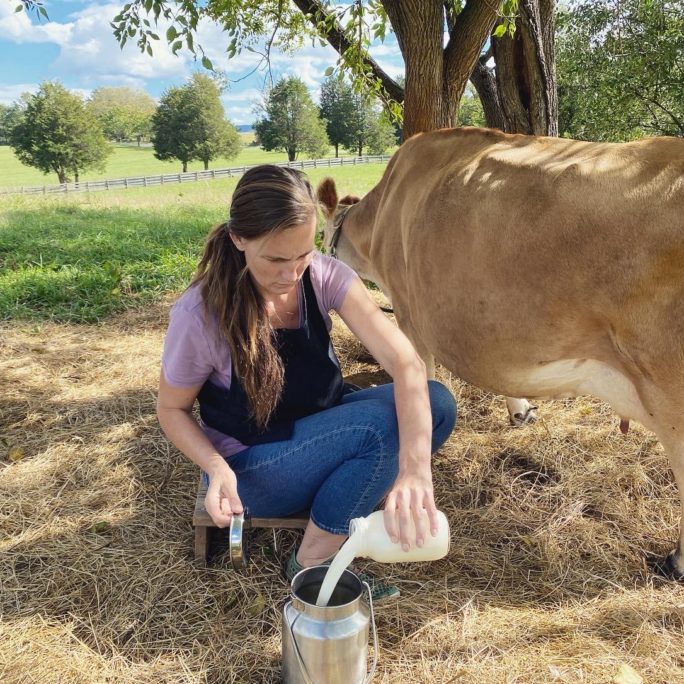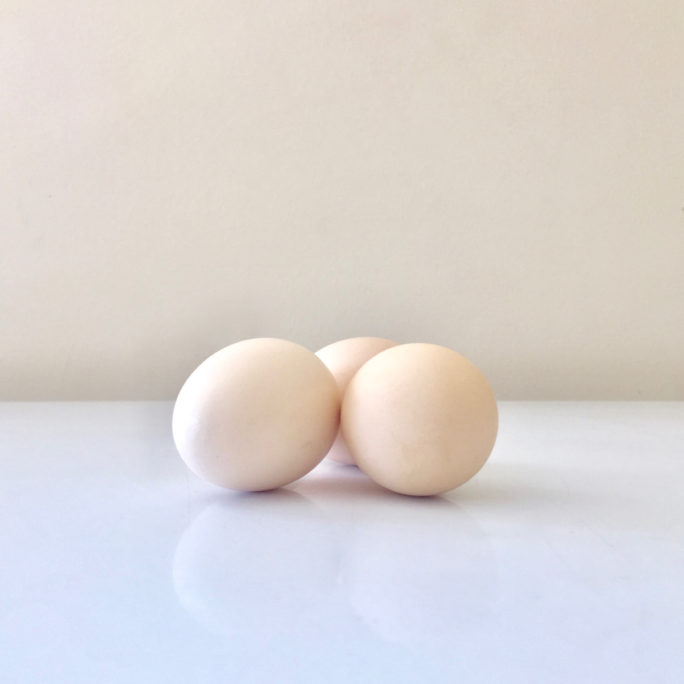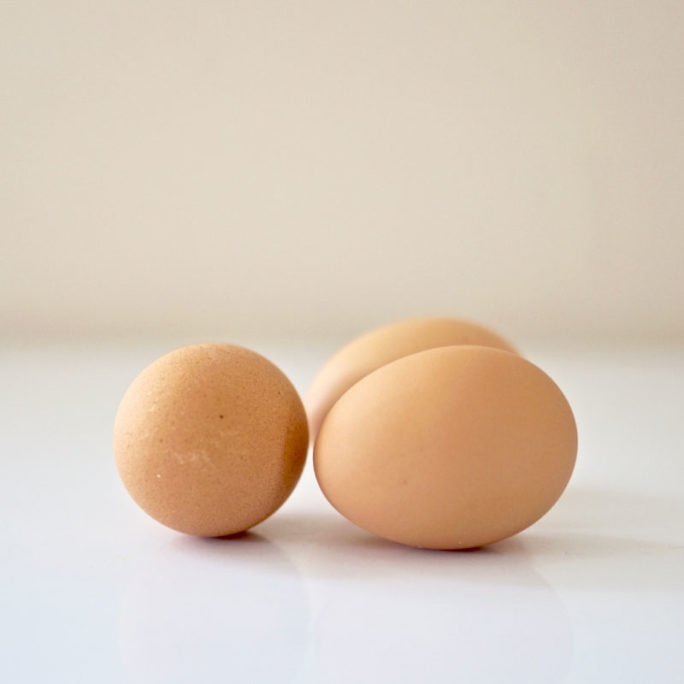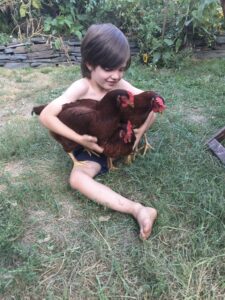
When we first started with three hens in our urban backyard, we bought the best feed we could find – certified organic North American grains, corn-free and soy-free – and there were plenty of kitchen scraps from our own kitchen and our neighbor’s to go around, plus grass and bugs in the yard of course!
Once we moved to our farm, our flock began to grow and over the years as we started offering more hatching eggs our feed bill grew significantly, along with our flock. Then inflation started impacting the cost of feed at the same time sales started diminishing. When hatching egg sales slowed down for the season earlier than previous years, we knew we needed to reduce our cost. We were paying almost $1,400 per month on chicken feed! We paused hatching egg sales and began to experiment with cost saving ideas…
Ideas for reducing your chicken feed bill:
- Keep your flock just large enough to provide the number of eggs your family eats. Supplement your chickens with your kitchen scraps and garden refuse! If you haven’t fallen prey to “chicken math” yet, count yourself blessed!
- If you do find yourself with more chickens than you need for eggs, start filling your freezer. We have butchered many chickens this year, but it seems we never keep up with the broody hens that keep turning up with more baby chicks for us to raise!
- Buy feed from a local distributor (or become one yourself if there aren’t any in your area) to save up to 50% off the price of shipped feed. If you serve as a distributor you get a wholesale price on the feed you purchase, and you can make a small profit on each bag you sell.
- Buy feed in a 2,000 pound tote, which can be stored for several months as long as you can keep rodents out of it!
- Purchase individual grains and mix your own feed (this is how we saved the most!)
On to our experiments! (We tried all but #1 above during the last year…)
Tote delivery
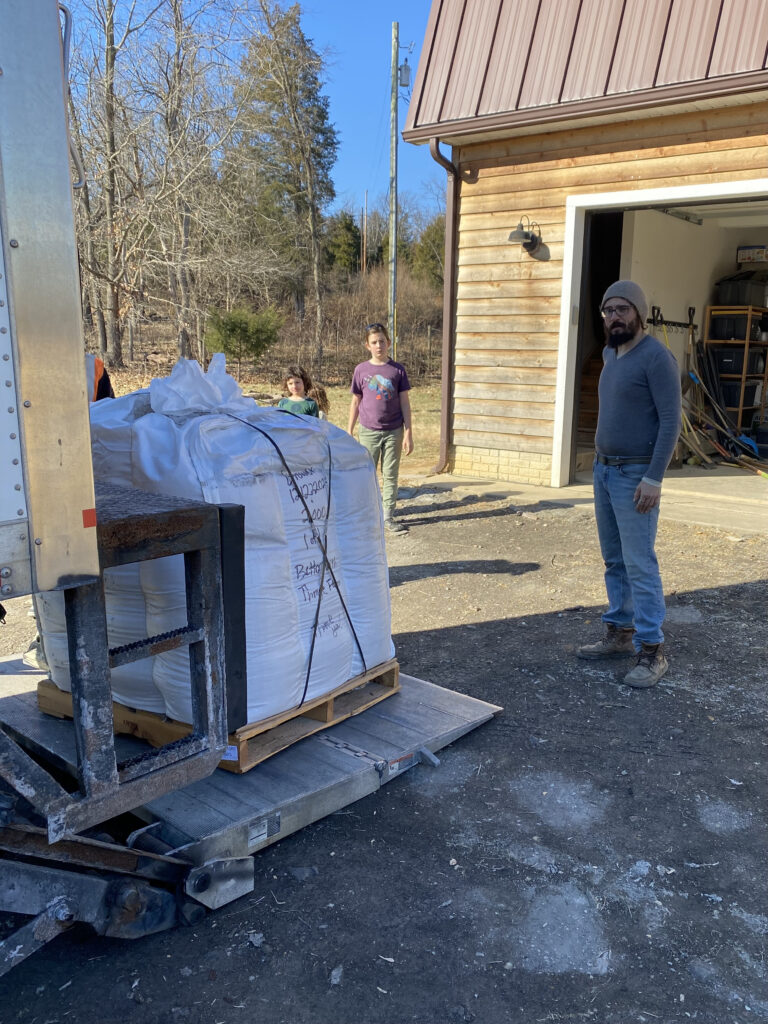
At the beginning of the last hatching egg season we bought a 2,000 pound tote of the chicken feed. A tote of feed sits on a 4×4 pallet and is about 4 feet tall as well when it’s full. It’s basically a very large square bag made of woven plastic material and you can fold down the sides as you empty the feed. The price per pound for a tote of feed including delivery was $0.95 instead of $1.70 for the same exact organic, corn-free, soy-free feed we previously bought by the bag (a 45% savings per pound). This is a great option if:
- A large truck can easily enter your property
- You can move a pallet with 2,000 pounds on it or you are willing to put in the work to transfer the feed to smaller containers. (It wasn’t nearly as hard as we expected!)
- You have a garage, barn or other covered place to store a large tote or the containers you transfer it to
- You can keep rodents out of the feed until it’s used
Getting a large truck to maneuver on our property is a hassle, so we decided not to reorder this way.
Monthly pick up
After hatching egg season ended, we decided to try switching from delivered feed to a monthly pick up of non-GMO feed from a local farm, which brought the cost down to $0.76 per pound (a 55% savings per pound). This particular local farm is not certified organic, but is still corn-free and soy-free, non-GMO and the farm uses regenerative farming practices.
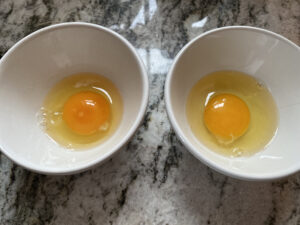
This feed seemed great at first! But then I started noticing that our chickens’ eggs were not the same quality they had been. I started looking at the difference in ingredients from our previous feed and watching more closely what our chickens were eating. It turned out that the protein content in the feed was partly relying on alfalfa pellets, and our chickens did not eat any of the alfalfa. So that protein we were paying for was being left on the ground and I suspect the change in our eggs was due to our chickens not getting enough protein.
DIY chicken feed
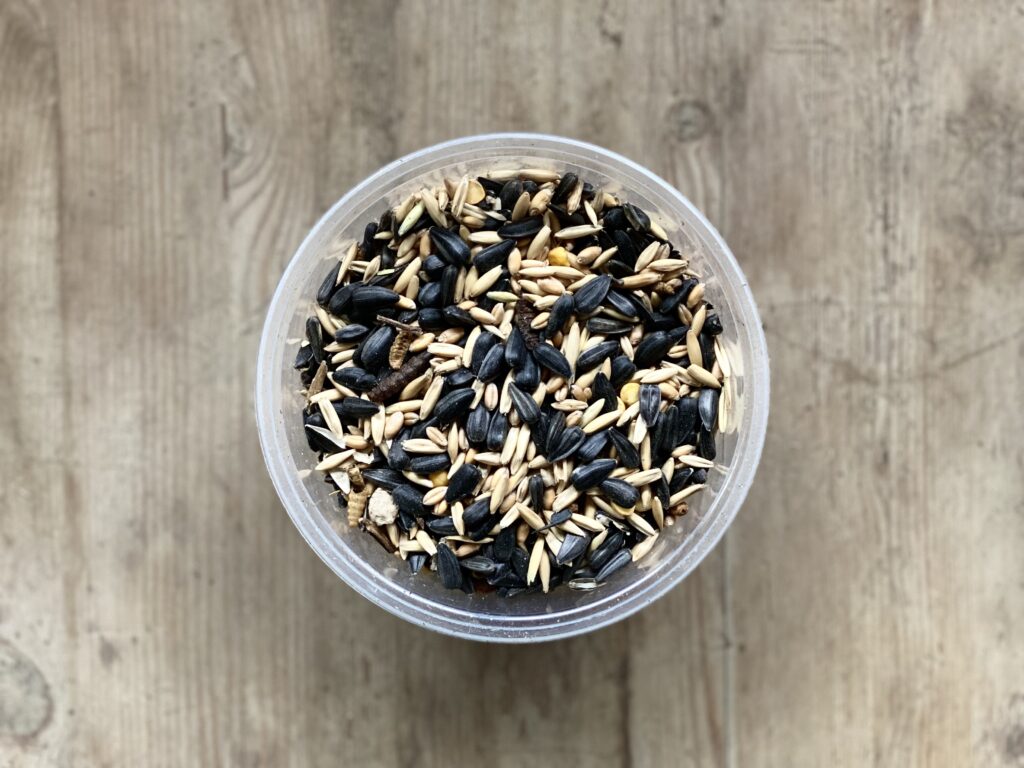
When I was trying to decide what to do next, I learned of a family who feeds their chickens wheat soaked in milk from their cows, which got me thinking about trying a more DIY option.
I put together a feed formulator to make sure I was getting enough protein in the mix (which is the main thing that can easily fall short when feeding chickens grains). We purchased individual grains to combine ourselves, which are less expensive than pre-mixed chicken feed. Over several months I tried out different combinations of ingredients to see what worked best for our chickens until I found a mix where the ingredients met their protein needs and I was sure they were actually eating it all!
Observations of DIY chicken feed and protein ingredients in chicken feed
Ideally we want our chickens eating at least 16% protein.
- Our chickens favorite grain/seed ingredient by far is black oil sunflower seeds – they always pick them first when given a choice of grains and seeds. BOSS are 16% protein.
- Our chickens love wheat next after BOSS and it’s the least expensive grain we buy so it helps keep the price down, but wheat is low in protein at 11%. (Corn or soy might be less expensive but we do not feed any corn or soy to our chickens.) Another popular and inexpensive grain for chickens is barley, but with the protein as low as 7% we decided not to use it.
- Oats are also the right proportion of protein at 17% and offer some health benefits for chickens that are different from other grains.
- Peas are higher in protein, but we discovered our chickens would only eat some peas and ignore the rest (I found they will eat a maximum of just over 5% peas).
- Milk is another ingredient with the right amount of protein, plus it includes minerals, helps moisten the dry grains and it’s free if you have extra from your own cow!
- To give the chickens a big protein boost and to include something that’s not a plant, we add dried black soldier fly grubs. Grubs are the first thing our chickens eat before any grains. Chickens are omnivores after all!
After playing around with these ingredients I figured out a DIY chicken feed recipe that costs us $0.60 per pound (a 65% savings per pound)!
This is the recipe I created (shown in the formulator I made so that you can come up with your own recipes):
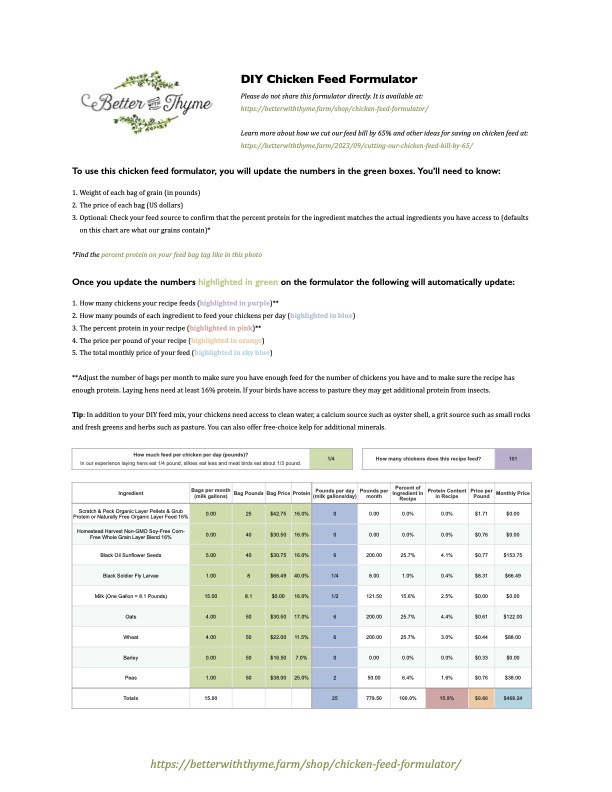
Ready to create your own DIY chicken feed recipe?
Get the editable version here.
Happy formulating!
XO Sarah
PS Here are a couple more tips for DIY chicken feed:
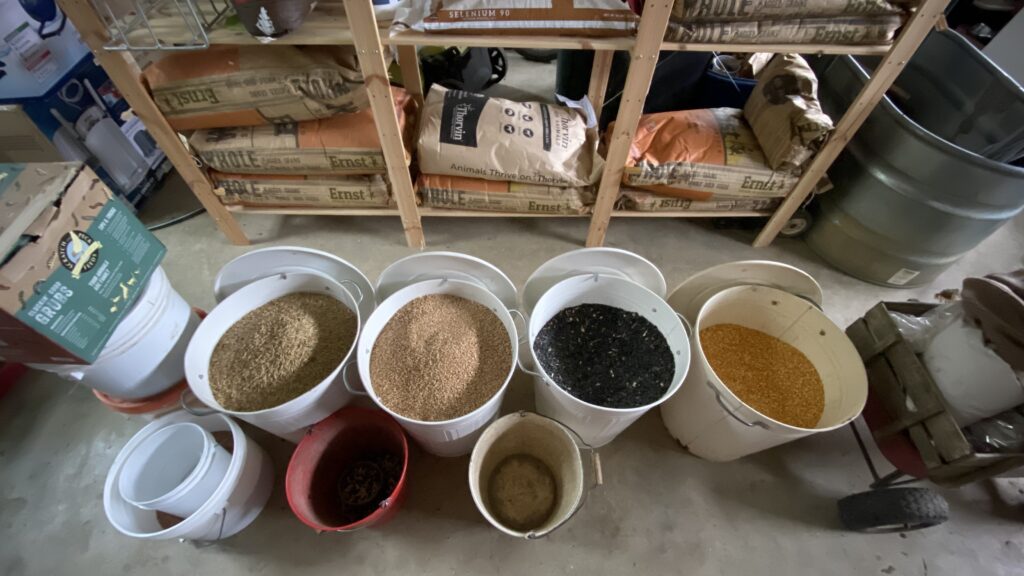
Store opened grains in metal containers to keep mice out!
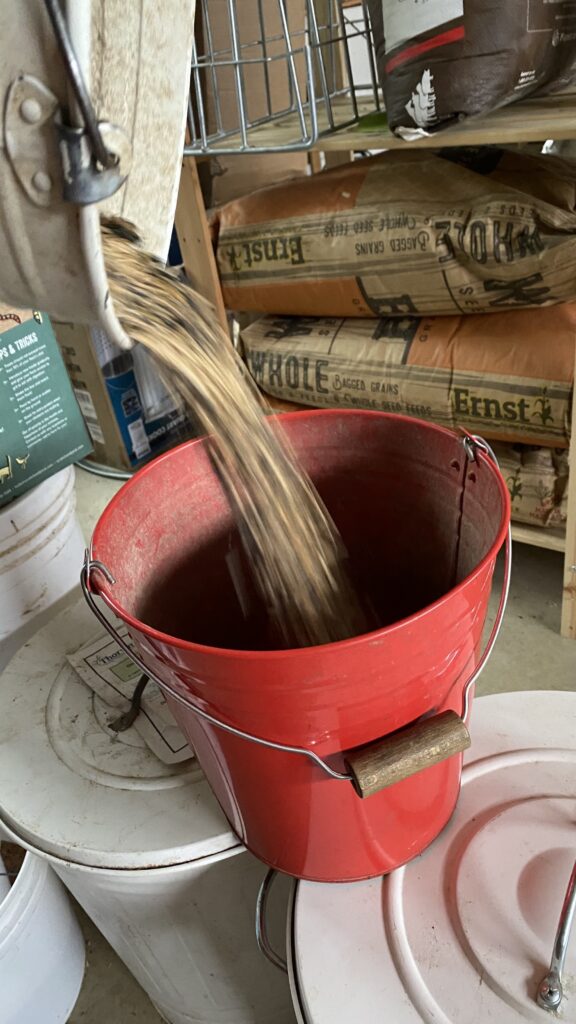
If you feed all your chickens in one place, there’s no need to worry about mixing. You can just measure the right amount of each grain and they will pick through it.
If you have chickens in separate groups like we do, keep two buckets near your grains. Measure your grains for the day into one bucket and then pour back and forth once or twice until everything is evenly distributed and then you know each group of chickens is getting the right ratio of each grain.



